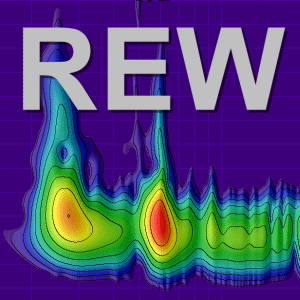Ramius2
Registered
Thread Starter
- Joined
- May 26, 2025
- Posts
- 6
More
- Preamp, Processor or Receiver
- Onkyo RZ50
- Main Amp
- Australian Monitor AM1600
- Additional Amp
- Behringer NX300 x2
- Other Amp
- Behring KM1700
- Streaming Equipment
- Apple TV
- Streaming Subscriptions
- Netflix, Stan, Prime, Max, Disney
- Front Speakers
- DIY Sound Group Elusive 1099
- Center Channel Speaker
- DIY Sound Group Elusive 1099
- Surround Speakers
- Definitive
- Surround Back Speakers
- Definitive
- Front Height Speakers
- Definitive
- Middle Height Speakers
- Definitive
- Subwoofers
- DIY - 8x15" IB, 6x12" IB, 6x12"IB, 15" Sealed NF
- Screen
- 110"
Hi,
I have been using REW for room measurement for some time but have just joined here and have just started my first real speaker design effort (ported 2 way). I am designing in VituixCad and for the last few days I have been running impedance and response measurements using REW – closely following the Vituix guide. As recommended I am using an external souncard with loopback and dual connection and (Sonarworks) calibrated analog microphone. Speaker is 1.5m off floor in a large cleared room (3m ceilings). I have Nearfield (Cone and Port) and Farfield measurements for a number of variations (port length and fill).
I have a calculated Fb of around 40Hz which aligns nicely with the dip between peaks in the measured Impedance curve. The port maximum should also align with Fb however it is at 52Hz. This causes a significant bump in the bass response when combined with the cone measurement. This ~12Hz discrepancy between Fb and port maximum is consistent in all cases with the Sonarworks mic.
I then checked measurements with my old UMIK-1 microphone. The port frequency is now as expected. Moreover the shape of the curve is now very close to modelling while the measurements with the Sonarworks microphone show exaggerated peaks and unexpected inflections.
I have no idea what might be causing this – REW settings, some physical interaction or bad hardware. Any input appreciated – it is difficult to have confidence in the measurements or to know how to proceed while this issue is unresolved.
Chart of Nearfield Port Measurements. Green trace is USB Mic - others are variations using analog Sonarworks mic.

I have been using REW for room measurement for some time but have just joined here and have just started my first real speaker design effort (ported 2 way). I am designing in VituixCad and for the last few days I have been running impedance and response measurements using REW – closely following the Vituix guide. As recommended I am using an external souncard with loopback and dual connection and (Sonarworks) calibrated analog microphone. Speaker is 1.5m off floor in a large cleared room (3m ceilings). I have Nearfield (Cone and Port) and Farfield measurements for a number of variations (port length and fill).
I have a calculated Fb of around 40Hz which aligns nicely with the dip between peaks in the measured Impedance curve. The port maximum should also align with Fb however it is at 52Hz. This causes a significant bump in the bass response when combined with the cone measurement. This ~12Hz discrepancy between Fb and port maximum is consistent in all cases with the Sonarworks mic.
I then checked measurements with my old UMIK-1 microphone. The port frequency is now as expected. Moreover the shape of the curve is now very close to modelling while the measurements with the Sonarworks microphone show exaggerated peaks and unexpected inflections.
I have no idea what might be causing this – REW settings, some physical interaction or bad hardware. Any input appreciated – it is difficult to have confidence in the measurements or to know how to proceed while this issue is unresolved.
Chart of Nearfield Port Measurements. Green trace is USB Mic - others are variations using analog Sonarworks mic.












